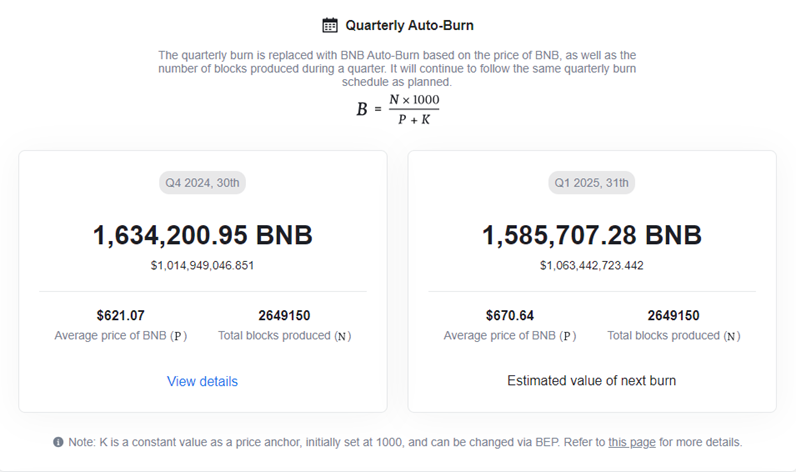Many investors dismiss BNB as simply “the Binance coin,” but that designation fails to recognize its broader value unlocks. While BNB was initially launched as the native token of the Binance Chain (now the BNB Smart Chain), and its early token burns were tied to Binance’s quarterly profits, BNB is evolving into a decentralized asset with multiple use cases and reasons for economic value.
While BNB may enjoy some value accrual from the expansion of Binance, its token supply model and the development of the BNB Chain offer two independent sources of value. First, BNB serves as a store of value through quarterly and fixed-ratio BNB burning mechanisms. Second, it powers smart contract functionality via the BNB Smart Chain, which has become a growing hub for DeFi and gaming applications.
You’re reading Crypto Long & Short, our weekly newsletter featuring insights, news and analysis for the professional investor. Sign up here to get it in your inbox every Wednesday.
Deflationary store of value
BNB’s burn mechanism differentiates it from almost every other cryptocurrency. Let’s compare BNB to BTC, ETH and SOL:
BTC: Inflationary, but with a capped supply.
ETH: Inflationary or deflationary, due to unpredictable burn rates tied to network activity.
SOL: Inflationary, starting at 8% and decreasing over time.
BNB’s burn process is unique; it removes tokens from circulation based on the number of blocks produced and average price each quarter, as well as having a fixed ratio of the gas fees accumulated in each block. Nearly 60 million BNB (~$35 billion at current prices) has been burned so far, reducing the circulating supply to 142 million. The last quarterly burn alone wiped $1 billion worth of BNB from existence — a 4.6% annualized deflation rate!
Bitcoin currently commands the most attention as a store of value asset because of its first mover advantage, market cap and a robust, decentralized network of miners. Any change in the Bitcoin code (i.e., changing the target supply) would need to be agreed upon by the majority of the network, which would prove exceedingly difficult with bitcoin’s level of decentralization. Investors should note that the BNB burn has already been modified from its original whitepaper so there is no guarantee it won’t be changed further. This is the tradeoff with an aggressive token burning strategy.

Source: bnbburn.info
BNB Chain – a modular L1 ecosystem
BNB’s next evolution is the BNB One Chain Initiative, which aims to unify a multichain ecosystem built for Web3 interoperability:
BNB Smart Chain (BSC): A fast, low-cost, EVM-compatible DeFi hub.
BNB Greenfield: A decentralized storage network for real-time, monetizable data.
opBNB: An ultra-low-fee (sub-$0.0001 per transaction) high-throughput rollup, built for on-chain gaming and high-demand dApps.
With several headwinds facing Ethereum (namely layer 2 fragmentation and inflationary concerns), BNB’s One Chain Initiative provides a viable alternative to developers and web3 applications.
Now, it isn’t all rainbows and butterflies with BNB. Investors should still consider the risk that their decentralization push is only a marketing stunt, as well as the ongoing regulatory battles over Binance’s know-your-customer (KYC) policy and other issues.
With Richard Teng now at the helm of the exchange, Binance and BNB’s next chapter will likely be focused on compliance and working with regulators/exchanges to increase access for the BNB token. With BNB mostly unavailable on U.S. exchanges, the token has still achieved a ~$100B market cap with international support alone. As U.S. crypto regulations ease, BNB’s re-entry into U.S. markets could be a significant catalyst for further growth.
Disclosures:
Osprey Funds manages the Osprey BNB Chain Trust (OBNB), a single-asset Trust providing exposure to BNB and publicly quoted on the OTCQX Market. Investors can learn more and read the Trust prospectus at ospreyfunds.io. Matt does not own any BNB or OBNB.

